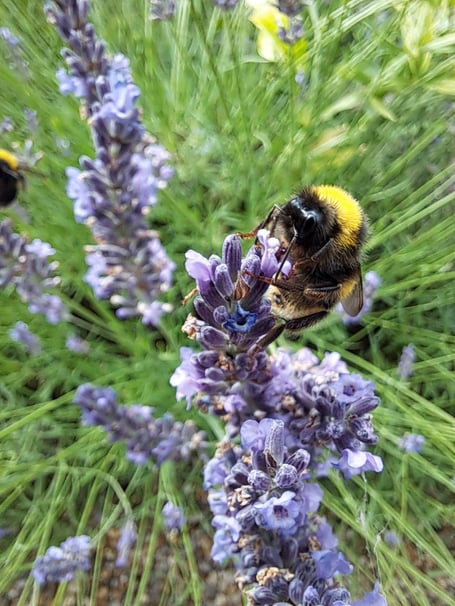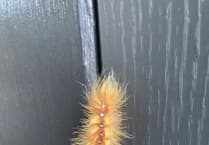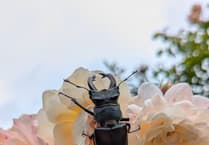.jpeg?trim=0,0,0,0&width=752&height=500&crop=752:500)
Summer is a busy time for our wild creatures. My most amazing nature sighting this past week was right in my own front garden. A row of lavender plants is covered in bumblebees! There are too many to count, but must number well over a hundred at any time.
Bees love lavender because it’s packed with nutritious pollen and nectar, while lavender loves bees because they’re excellent pollinators.
Lavender attracts bees with its strong fragrance and the colour and shape of the flowers. A chemical compound called linalool gives the plant its characteristic fragrance, which bees love. Linalool is also found in plants such as mint and basil, which is not surprising as they are all plants in the mint family.
While all types of bee are attracted to lavender, bumblebees are particularly drawn in. These bees have a long tongue to extract nectar from deep within the flower. However, the buff-tailed bumblebee has a shorter tongue than most, and this is the most common on our lavender.
Honeybees have a much shorter tongue than bumblebees to collect nectar, so must visit many more lavender flowers for the same rewards.
It has also been great to see many butterflies recently after their scarcity during spring compared with previous years.
The recent increase in numbers is timely, because it’s time for this year’s Big Butterfly Count. Let’s hope the sun shines so butterflies and moths are fluttering and ready to be counted!
The Big Butterfly Count is the annual “citizen science” activity by the Butterfly Conservation charity. They ask that you count butterflies and day-flying moths anytime from tomorrow, Friday 18 July, until Sunday 10 August.
Last year, over 85,000 people submitted over 143,000 records. Butterfly Conservation said it revealed that the UK is “in a Butterfly Emergency, with more than half of our butterfly species now in long-term decline”.
Choose a sunny spot and record the species and numbers of butterflies and moths you see during a 15-minute period, then enter the results on the special website: bigbutterflycount.butterfly-conservation.org. The website also contains advice on taking part, and there’s a free downloadable guide to help with identification.
Alternatively you can use the free Big Butterfly Count app for smartphones. With this you can count them on the move and submit your results all in one go.
Butterflies and moths are vital parts of the ecosystem, both as pollinators and as food for other creatures. Our results enable scientists to see which species are faring well and which are in decline, which also reveals how climate change is affecting their habitats.
Records are welcome from anywhere: parks, school grounds, gardens, fields and forests. You can repeat the count on as many occasions and in as many locations as you wish.
Butterfly Conservation asks you to enter a result even if you don’t see any butterflies, so they know where butterflies are not being seen, which may indicate a problem.
Butterfly Conservation provides a list of target butterfly and moth species they would like counted. It explains that restricting the list reduces counting errors so they have a clearer view of actual butterfly numbers across the country.
For full details on taking part, visit the Big Butterfly Count website: bigbutterflycount.butterfly-conservation.org. The site includes an interesting map where you can see the numbers and species recorded so far.





Comments
This article has no comments yet. Be the first to leave a comment.